In this composite image of the Whirlpool Galaxy, the Very Large Array has captured the vastness of this colliding pair like no other telescope can. In white is how the galaxies appear to optical telescopes: one giant spiral galaxy with a smaller one hanging off an arm. The VLA sees a much bigger picture. Colored blue are the cast-off gases that were once the outer spiral arms of these galaxies. In red are the areas where new stars are being born.
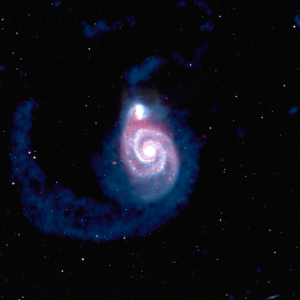
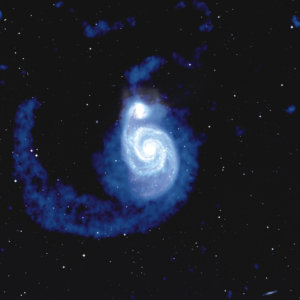
The Collision of M51
In this composite image of the Whirlpool Galaxy, the Very Large Array has captured the vastness of this colliding pair like no other telescope can. In white is how the galaxies appear to optical telescopes: one giant spiral galaxy with a smaller one hanging off an arm. The VLA sees a much bigger picture. Colored blue are the cast-off gases that were once the outer spiral arms of these galaxies. They’ve been yanked apart and left when the smaller galaxy passed by.
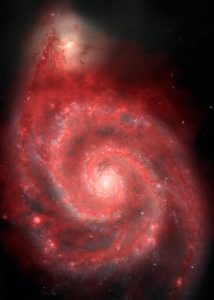
New View of the Whirlpool
This is the most detailed radio image of the Whirlpool Galaxy ever captured. The Very Large Array observed this pair of interacting galaxies as a demonstration of its new upgrade to the world’s most powerful radio astronomy camera. In white is the image of the Whirlpool as taken by optical telescopes. In red are the gas clouds imaged by their radio waves by the VLA. This is a very rich environment for star formation.
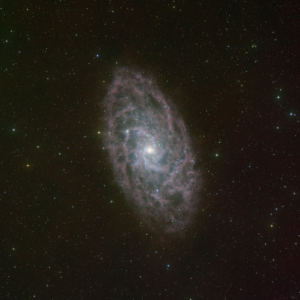
Radio Telescope Reveal the Cold Hydrogen Gas in M33
In this combined optical and radio image, the faint galaxy in the constellation Triangulum looks like lace hanging in the sky. Also known as M33, the Triangulum Galaxy is part of the Local Group of galaxies, which includes the Andromeda Galaxy and our galaxy, the Milky Way. M33 is over thirty thousand light years across, and more than two million light years away. The optical data in this image (white) show the many stars within the galaxy as well as reddish star forming regions that are filled with hot Hydrogen gas. The radio data (colored pink) from the Very Large Array (VLA) reveal the cool Hydrogen gas within the galaxy, gas which cannot be seen with an optical telescope. Combined together, the radio and optical give a more comprehensive view of star formation in this galaxy.

Galactic Center
The center of our Milky Way Galaxy is only clearly visible to radio telescopes. The supermassive black hole in its core is glaring in radio waves, surrounded by the smokerings of supernova remnants and the arcs of material caught in the core’s strong magnetic fields. This gigantic image was pieced together by multiple observations taken by the Very Large Array (VLA).
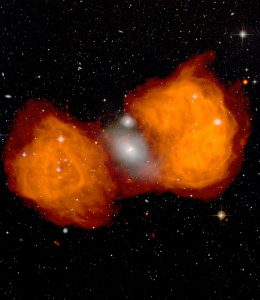
Famous Fornax Galaxy
Fornax A is a galaxy with a very active black hole in its core that is spraying radio waves out into enormous jets. Here, the white glow in the center is the visible galaxy NGC 1316 that you can see through the constellation of Fornax. Notice the wee spiral galaxy above it? These two galaxies are merging, and as gas and dust are stripped out of the small galaxy and poured into the center of NGC 1316, the black hole nestled there spins it up. How do we know this? The huge radio lobes to either side of this merger are the telltale signs that a black hole is being fed more than it can handle. These are the billowing ends of powerful jets shooting out spun-up, escaped material far into space.





